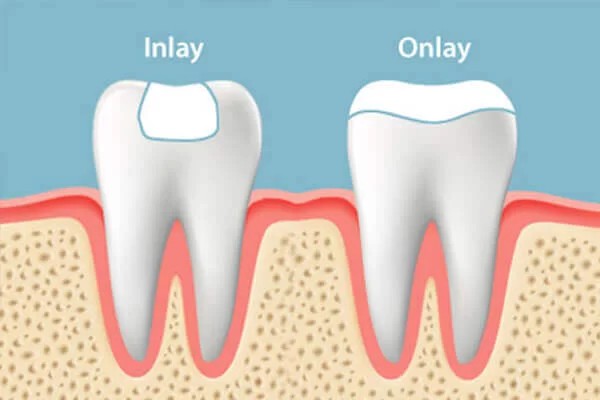The tab is made in cases where a significant part of the tooth crown is missing and it can no longer be restored with a filling, or if the contact point between the teeth cannot be created with a filling material due to the large volume of lost tooth tissue. In addition, tabs are used in the treatment of root canals for the final restoration of the tooth after root filling.
A tab (insert, onlay) is, in fact, a durable material that is glued into the tooth in its finished form. It is made by a dental technician in the laboratory based on an individual impression of the patient. The tabs can be made of ceramic, composite or metal.
The insert is made when it is possible to preserve the tops of the tooth and it is not necessary to cover the entire chewing surface. It is also used if it is necessary to cover several tooth tips, but at least one of them remains uncovered.
It is not applied if the tab covers all the vertices of the chewing tooth. If the crown part of the tooth is significantly damaged, it may be necessary to make an inlay covering the entire chewing surface to protect the tooth from fracture. This type of restoration is often chosen for root teeth as the final solution.


At least two visits to the dentist are required to make the tabs.
During the first visit, the tooth is prepared for insertion by removing the caries-affected areas and forming a cavity of the desired shape. Then an impression of the teeth is taken, on the basis of which a dental technician in the laboratory makes a tab that will fit perfectly and match the shape of the tooth.
To protect the tooth before installing the tab, it is closed with a temporary seal.
On the second visit, the tab is fixed with glue, if necessary with the use of local anesthesia.
After that, a follow-up examination may be scheduled at the request of the patient.